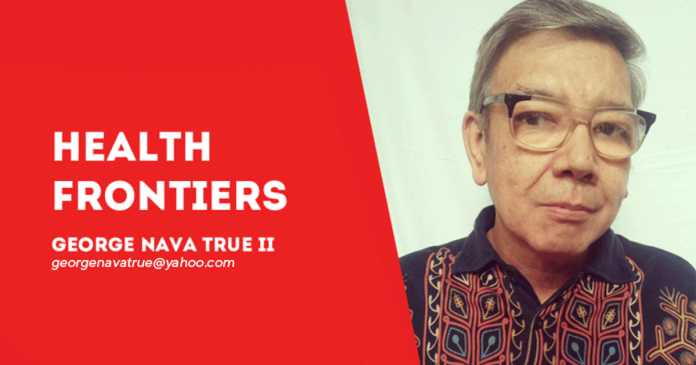
BY GEORGE NAVA TRUE II
Is there a cure for TMJ? I was diagnosed with this condition and the doctor advised me to consult a specialist. However, I can’t afford to see one since the X-ray alone costs P2000. I’m taking a painkiller for relief, but I can’t sleep well because of my problem. – Name and address withheld on request.
Sorry to hear that. I hope the information here will help. TMJ is short for the temporomandibular joint that connects the jawbone to the skull. These joints are located on each side of the jaw.
The TMJ acts like a hinge with sliding motions. Bones that interact in the joint are covered with cartilage and are separated by a small shock-absorbing disk. This ensures the smooth opening and closing of the mouth. If you have a TMJ disorder or TMD, this causes pain whenever you move the affected joint.
It’s not easy to determine why people develop a TMJ disorder, and a combination of factors may be involved. Some people with TMJ disorders tend to clench or grind their teeth (bruxism), but others who do never develop the problem.
Pain may also occur when the disk erodes or moves out of its proper position, the cartilage is damaged by arthritis, or the joint is damaged by a blow or other injury. In many cases, however, the exact cause of TMJ disorders is unknown.
Usual signs
According to the Mayo Clinic, the usual signs of a TMJ disorder include tenderness or pain in the jaw, in one or both joints, in and around the ear, on the face, and while chewing. There may be difficulty chewing and the joint may lock, making it hard to open or close the mouth. In others, there’s a clicking sound or a grating sensation when chewing or opening the mouth.
Who’s at risk?
Those at risk for TMJ disorders include people with rheumatoid arthritis and osteoarthritis, a jaw injury, chronic bruxism, and certain connective tissue diseases.
To determine what the problem is, the doctor or dentist may recommend dental X-rays, a CT scan, or MRI to see if there’s something wrong with the joint or the surrounding area. Or the physician may insert a small thin tube (cannula) into the joint space and use a small camera to view the area – a procedure called TMJ arthroscopy.
For many patients, the pain of TMJ disorders is temporary and can be relieved with nonsurgical treatments. The Mayo Clinic said surgery is usually a last resort and done only when other conservative measures have failed. In patients without pain and those who have no problem chewing or moving the mouth, treatment is not required. This is also true if symptoms disappear after a while.
Treatment options
Before going to a doctor, try these home remedies:
* Apply warm, moist heat, or ice to the side of the face to reduce pain.
* Avoid tension-related habits like clenching the jaw, grinding teeth, or chewing pencils,
* Don’t overuse the jaw muscles. Eat soft foods and cut what you eat into small pieces. Avoid sticky or chewy food, and chewing gum.
* Stretching and massage. Ask your doctor, dentist, or physical therapist about exercises that stretch and strengthen the jaw muscles and how to massage the muscles.
If the problem persists, a specialist may recommend the following:
* Muscle relaxants – may be used for a few days or weeks if the pain is caused by muscle spasms.
* Pain relievers and anti-inflammatories – patients usually start with over-the-counter pain medications, and stronger medicines are prescribed if the former doesn’t work.
* Tricyclic antidepressants – low-dose medications for depression can help relieve pain and control bruxism.
Also, the Mayo Clinic said these may help:
* Education and counseling – to make patients understand the bad habits that aggravate pain like teeth clenching or grinding, leaning on your chin, or biting fingernails.
* Occlusal appliances – oral splints or mouth guards are soft or firm devices inserted over the teeth to stop the pain.
* Physical therapy – in the form of exercises that stretch and strengthen jaw muscles. Ultrasound, moist heat, and ice are other options.
Surgery and other procedures
Here are other treatment options from the Mayo Clinic:
* Arthrocentesis – this is a minimally invasive procedure that involves the insertion of small needles into the joint to irrigate the area to remove debris and inflammatory byproducts.
* Corticosteroid or Botox injections – on the joint or jaw muscles may work.
* Modified condylotomy – surgery on the mandible may treat pain if there is jaw locking.
* Open-joint surgery – if jaw pain does not disappear and a structural problem is suspected, the doctor or dentist may perform an arthrotomy to repair or replace the joint. But this is risky than other procedures and should be considered carefully.
***
National Press Club and Philippine Dental Association awardee George N. True II has written two bestsellers based on his popular column which has been running for almost 40 years. For questions about health, email georgenavatrue@yahoo.com./PN

